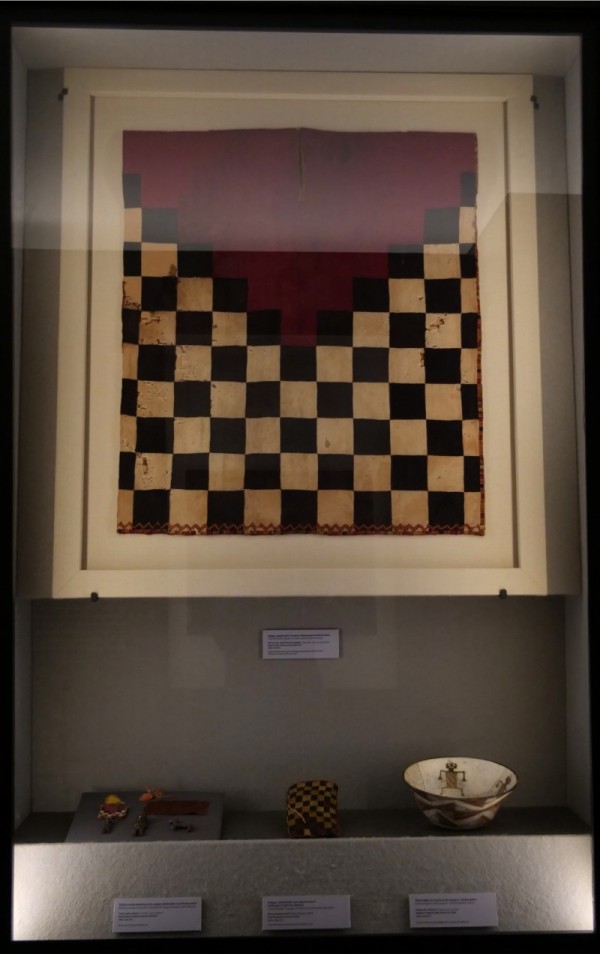
'History of the Inka people' showcase.
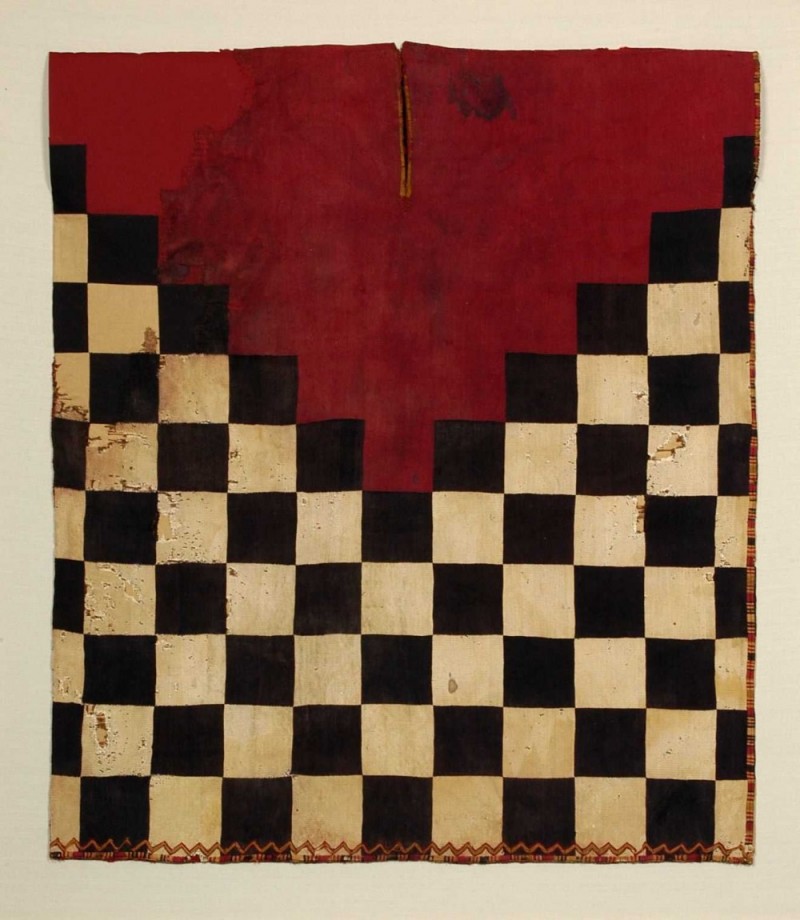
‘Checkerboard’ toqapu of the kind used by the Inka army in a unku-tunic. Tapestry waeve, camelid fiber. Imperio Inka, Andes Centrales del Perú, 1400-1532 d.C. Colección MNAAHP-Ministerio de Cultura de Perú, RT-002377 (860 x 740 mm).
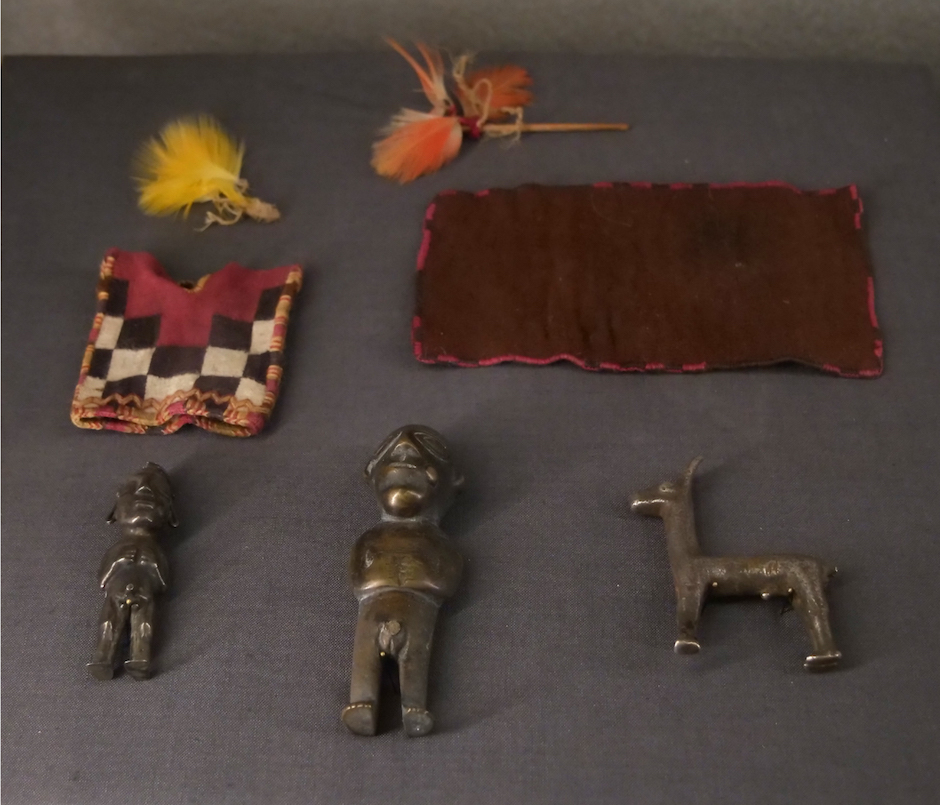
Miniature tunic (unku) with a toqapu ‘checkerboard’ design among ritual offerings. Textile, silver, feathers. Imperio Inka, Andes Centrales del Perú, 1400-1532 d.C. Colección Museo de Colchagua, PE-MCOL 09 (110 mm, alto).
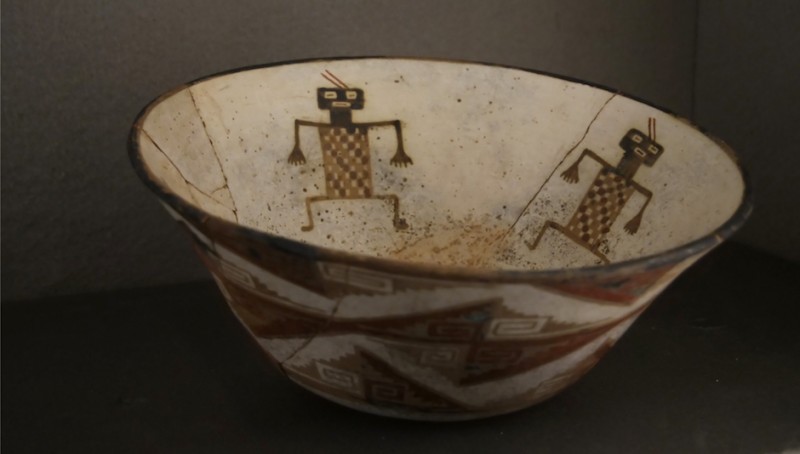
Human figures with toqapu ‘checkerboard’ tunics. Deep bowl, ceramic. Diaguita-Imperio Inka, Norte de Chile, 1400-1532 d.C. Colección Museo Arqueológico de La Serena, Chile (200 x 250 mm).
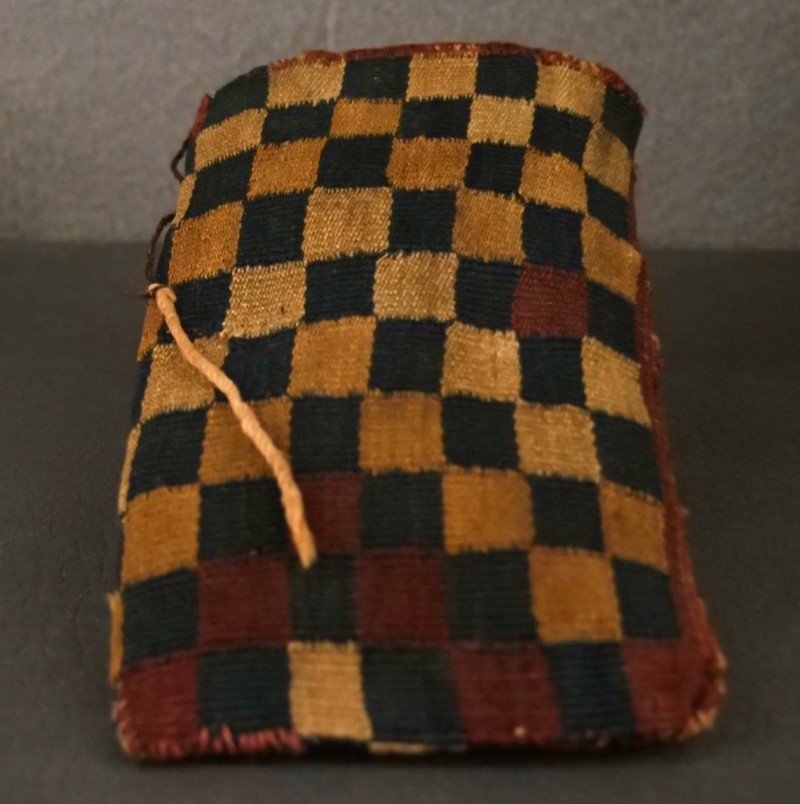
‘Checkerboard’ toqapu of the kind used by the Inka army. Bag (wayaja), textile. Inka-Tarapacá, norte de Chile, 1400-1532 d.C. Colección Museo Chileno de Arte Precolombino, 2736 (202 x 107 mm).
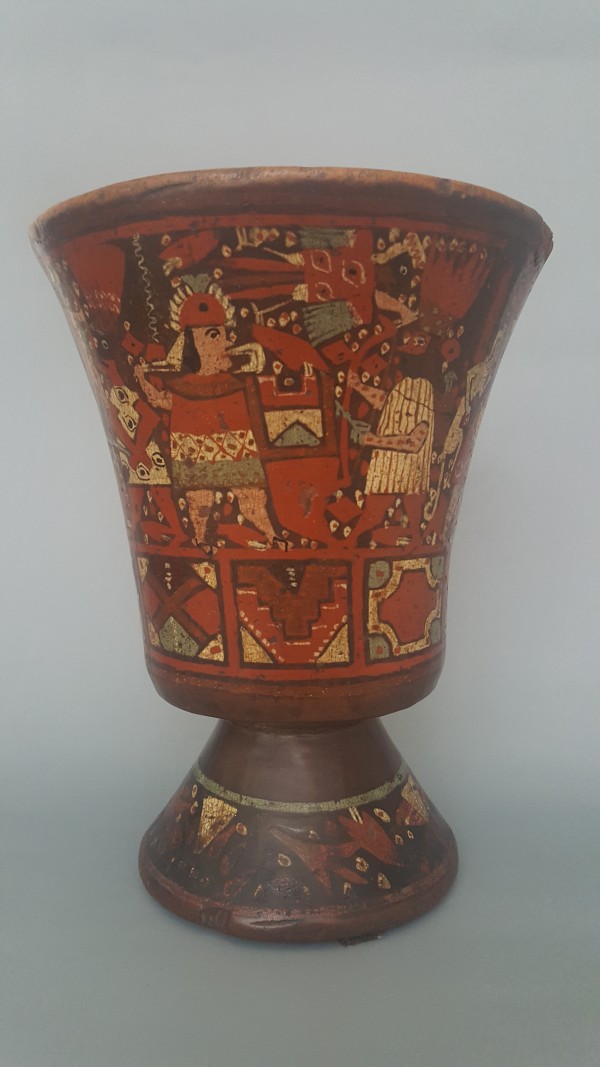
War against the jungle peoples (Antis). Quero cup, Wood. Colonial, Perú, Siglos XVI-XVIII. Colección particular, PE-PLE 03 (213 x 170 mm).
When the Inkas ‘visually’ narrate their conquests, they showed themselves dressed in unkus—tunics with a checkerboard design that were the emblem of their military power. These narratives also alluded to subjugated ethnic groups, who were characterized by their attire, types of weapons and the places they lived, including the plants and animals found there. One of the most frequently represented subject peoples were the Antis, who inhabited the jungle region that the Inkas called ‘Antisuyu’. The Inkas depicted them dressed in long mottled tunics that resembled leopard skins, with long hair, feathered headdresses, face paint and bare feet and with maces or bows and arrows in their hands. In these portrayals, the Antis are always fighting with and being defeated by Inka soldiers or taken as prisoners.









































